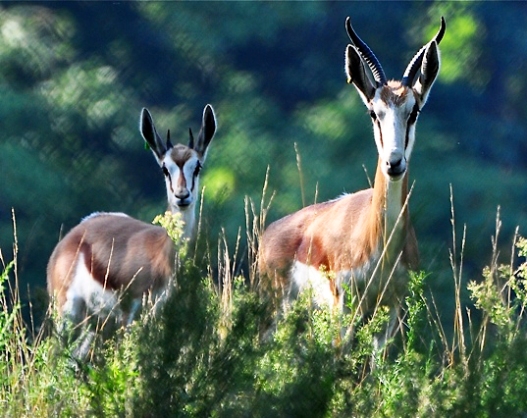Visitors to Mesker Park Zoo & Botanic Garden can now see a new species of animals, recently added to the Zoo’s animal collection. For the first time in Zoo history, springbok are now on exhibit and visible from the Zoo’s African Panorama decks. Two male and three female springbok were shipped from the Pittsburgh Zoo and have been adjusting well to their exhibit in Evansville. A male calf, conceived and born at Mesker Park Zoo & Botanic Garden, now brings the Zoo’s springbok herd to six animals!
Springbok are native to the western half of southern Africa. Their coloration is bright reddish fawn with a dark side-band contrasting with white under parts, a white face with a dark band from eye to muzzle, and a white rump. They have a line of white erectile hairs in a fold of skin along their lower back, and short horns that curve sharply at the tip. These animals are typically 38-45 inches in length and reach a height at the shoulder of 30 inches. Springbok can run at speeds of up to 55 miles per hour, jump 11 1/2 feet vertically, and 50 feet horizontally.
Females and bachelor males form separate herds, with breeding males maintaining that separation for females within their territory. Females reach sexual maturity in a year and will reproduce every two years, typically producing one lamb during summer months. Springbok graze on young, tender grasses and browse on shrubs and succulents. The lifespan of these animals is up to 10 years.
*Photo provided by Bill Palmer


